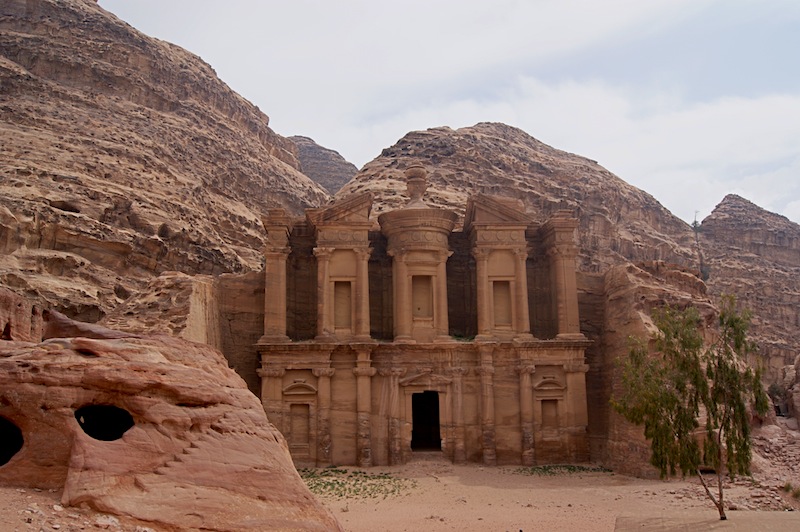Back when we were first planning our trip to Jordan I was under the impression that Petra consisted solely of the famous Treasury. It was only when I read the Lonely Planet guide book that I realised there was an entire city awaiting us at at the country’s premier tourist attraction.
The Treasury is the city’s trademark, the iconic image that adorns all the brochures and coffee table travel books. It suddenly appears through a gap in the rocks on the walk into Petra and it’s every bit as magical and impressive as the guide books promise, a tomb carved heroically into the red rock.
On our first day we took a tour with our guide and he did his best to build the tension, to ensure it was hidden from us until the last minute. I could see that that moment of revelation and the gasps of wonder he got from his audience was one of the highlights of his job.

Petra was built in the centuries before Christ by the extraordinarily gifted and commercially successful Nabateans. Ironically, it’s only their tombs that they carved into the hills that survive. Their much more vulnerable homes and civic buildings were removed or destroyed when Petra declined in importance during the second millennium. The Nabateans grew rich because Petra was a key stop on the trade routes that brought spices and silks from Asia and elsewhere in the middle east, earning them a fortune and laying the foundations of a great empire.
Wherever one looks in the city today there are mausoleums – big and small, elaborate and humble – carved into the majestic rust-coloured mountains. Even if we’d stayed a week we’d never have see them all but at least we had two days at this UNESCO World Heritage Site, enough to see more than most.
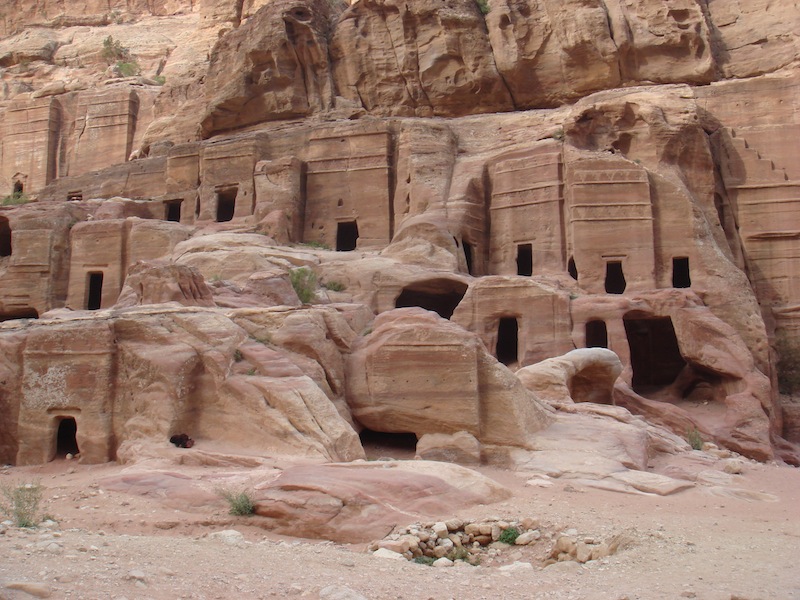
The site is actually quite a walk away from the modern and rather scruffy town of Wadi Musa, down a long path lined with a wealth of archaeological remains. But then we entered the Siq, the long and winding gorge that makes for a spectacular walk and that’s almost worth the price of admission alone, boasting spectacular rock formations and striations.
When we emerged from between the cliffs and were faced with The Treasury, the thrill was indescribable. Visiting at different times of the day, we noticed that it changed colour with the light, turning a rich red and gold at sunrise and sunset.
Also known as Al-Khazneh, The Treasury is over 40m high – a giant frontage carved into the red rocks around 2,000 years ago, apparently as a king’s tomb. Crowds milled around snapping photos and locals offered camel rides and sold souvenirs. It was a bit of a log-jam on the way to the rest of Petra.
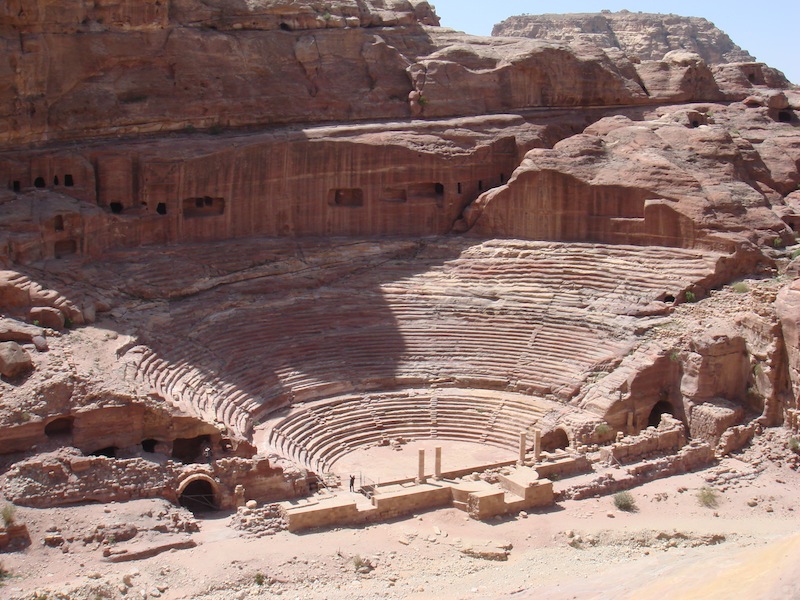
We spent our first day on a walking tour with our knowledgeable Jordanian guide, getting our bearings and learning the history. As we made our way away from the Treasury, we were taken aback by the sheer number of tombs carved into the hills and mountains, some much smaller than the Treasury, others even more vast and spectacularly decorated with carvings. The Royal Tombs are particularly dramatic, but inside we found them empty and eerily quiet.
Nearby we came across the giant theatre, which the locals will have filled in their thousands for their regular celebrations. Appropriately it was very Roman for by 100AD or so the all-conquering Europeans had managed to subdue the Nabateans and stamp their authority on the city. There are buildings and other archaeological remains, including temples and columns, that hint at the changes they made and the culture they brought to the region.
After several hours exploring in the heat and dust, among the crowds, it was time to leave but the plan was set in stone for our next day.
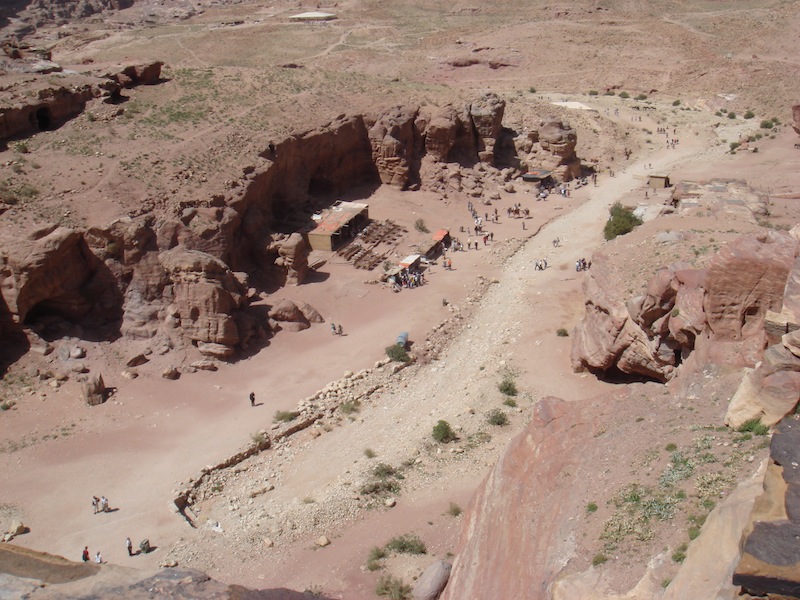
We chose to wake at dawn to beat the crowds, to see more of the site on our own. Shortly after 6am we were making our way through the Siq with barely another soul around. It was magical, wonderful and spooky to walk through the city before it had woken and it’s the only way to see it.
We were heading for the Monastery, a huge tomb at the top of a mountain reached by a sometimes perilous path. We could’ve chosen a donkey ride up but that sounded even more risky, and we did see someone fall off during our climb. On the way up we enjoyed the awesome views despite the weather being somewhat murkier than the day before. At the top, it was another breathtaking moment as the tomb emerged in front of us but the mist had rolled in too.
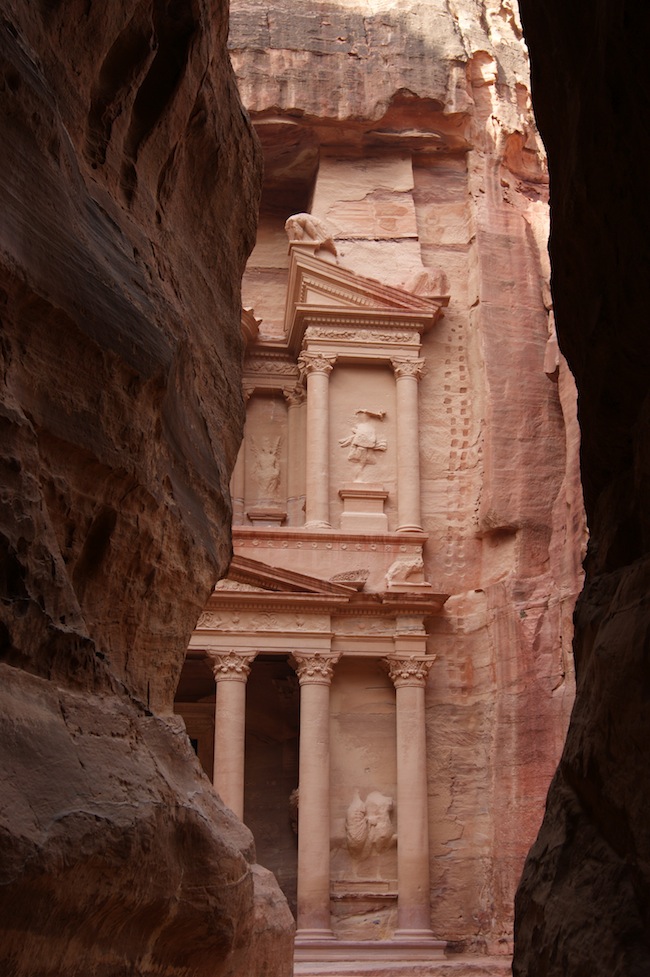
We enjoyed the solitude for a while but then descended and made our way past dozens more tombs to another high point, the appropriately named High Place of Sacrifice – one of the best places to get a view of the city. It was there that the Nabateans sacrificed animals to their gods and goddesses.
We descended to a cafe, ate an average lunch and soaked up the atmosphere. We were planning to go on to Little Petra, or Al Beidha. A drive away, it’s smaller than the main site, quieter but has similar carved tombs, but we’d run out of time and energy, our feet suffering from two days of constant walking. We walked back to our hotel instead, ready for a beer.
The town of Wadi Musa lives off the proceeds of its premier tourism site. It’s a typical Middle-Eastern town too – rather shambolic but full of life. The locals welcomed us wholeheartedly and with a genuine friendliness, whether we were buying something to eat and drink or browsing souvenirs from the many stalls up near the entrance to the historic site.
We stayed at the average Crowne Plaza, sadly missing out on the luxury of the Movenpick. The next morning it was time to move on, to explore more of the country and, in particular, the desert castles of Jordan.

